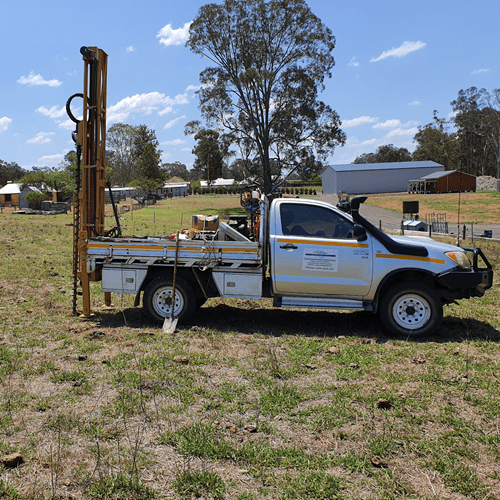Land Contamination, Phase 2-Detailed Site Investigations

A Phase 2 Detailed Site Investigation or Phase 2 Environmental Site Assessment or Investigation is undertaken if a Preliminary Site Investigation finds a risk of contamination on a property. These assessments entail sampling of the soil and/or groundwater to determine the nature and extent of contamination on or adjacent to the subject property. The purpose of a Detailed Site Investigation is to determine if the soil or groundwater has been contaminated due to previous uses of the site or from neighbouring activities. These assessments generally involve the following:
- A geophysical locate survey of the site services (locate surveys – often using Ground Penetrating Radar) to determine any underground voids (such as sumps or underground storage tanks – Underground Petroleum Storage Systems-UPSS) and to avoid drilling through any electrical, plumbing or gas services when undertaking Geotechnical Drilling to collect soil samples or to install a groundwater monitoring well.
- The collection of soil, groundwater, surface water and sediment samples. Vapour samples are also collected for some sites where Vapour Intrusion may be a risk. Samples are generally collected at a variety of depths from near surface down to sometimes several metres below ground level. Geotechnical drilling equipment in the form of solid flight augers or direct push sampling is often used in order to collect the samples and install monitoring wells and we own and operate our own environmental drilling equipment which is used on most jobs.
- The physical properties of the samples are evaluated in the field and often field screened for volatiles before they are sent to a NATA registered environmental laboratory to determine any contaminants.
- Evaluation of the chemical analysis data from the laboratory is undertaken and comparisons and modifications are made to the Conceptual Site Model if contamination is found. A qualitative risk assessment is examined based on the levels of contaminants are compared against guideline levels and the proposed site use.
- The final step in the process is the preparation of a Detailed Site Investigation Report.
If contamination is found in the Detailed Site Investigation report a Remedial Action Plan (RAP) must be undertaken to further evaluate the potential risk to human and ecological receptors and to provide a plan for cleaning up the contamination on the site. The RAP must detail the methods to be implemented to reach the established goals for the site along with the environmental safeguards to ensure the remediation occurs in a manner that is safe for the environment and humans.
Since 1992 we have been working as professional Environmental Consultants to private developers and government to assess Land Contamination. We have our own specialised Geotechnical Drill Rig and also direct push percussion sampling equipment specialised for difficult to access areas. For some jobs we work with drillers we have known and worked with for many years and get good rates for our clients. We service the whole of New South Wales, including Greater Sydney, Western Sydney, the Blue Mountains, West of the Great Dividing Range, Central Coast, Newcastle, Hunter Valley, Wollongong and Illawarra, Southern Highlands, Shoalhaven, Port Macquarie, North Coast, and Central Western NSW. Schedule a consultation with our team of experienced environmental consultants today

